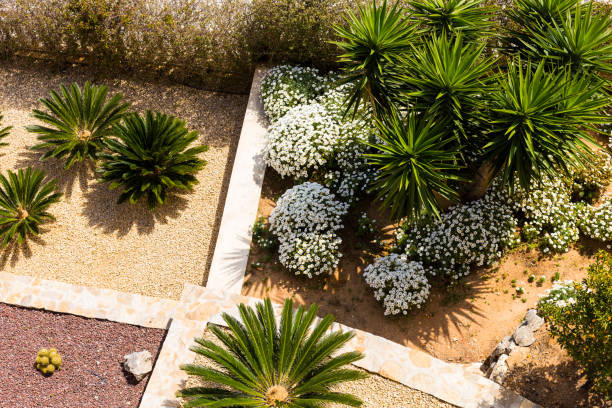As the temperatures continue to rise, the importance of using sustainable practices has become increasingly evident. Landscape design is one area we can significantly impact, and the best option is a drought-tolerant landscape. This design conserves water and serves as a low-maintenance and stunning alternative to traditional lawns and gardens. Let us explore the best drought-tolerant design ideas to help you create a beautiful outdoor area while preserving water.
Decrease the Size of Your Lawn
This has many benefits, especially for drought-tolerant landscapes. A 100-square-foot lawn requires up to 365 gallons of irrigated water yearly when you only water it once a week. This is the equivalent of eight 20-minute showers, which would not be a suitable thing to do during a water crisis. Another excellent alternative for a drought-tolerant landscape is replacing sod with artificial turf if you cannot live without a patch of green. It requires no water and will be perfect for the drought-tolerant garden.
Increase Landscape Rock Groundcover
Landscape rocks require no water and come in various sizes, colors, and textures, thus making them incredibly versatile. Rock ground cover may include crushed stone and gravel, decomposed granite, sand, river rock, and pebbles. Incorporating a rock ground cover in drought-tolerant landscaping will provide an attractive and low-maintenance solution that conserves water by reducing the need for frequent irrigation. It will also add texture and visual interest to your outdoor space.
Rock Water Feature
Water features do have a place in drought-tolerant landscapes. A rock water feature can give your property a focal point to rest and refresh the viewer’s eyes. It will have psychological effects on humans and be beneficial for thirsty birds and animals. If you are worried about losing too much water to evaporation, you can place the running water feature under shade or turn it on only when you are there to enjoy it. Many suppliers offer an extensive ready-to-go fountain collection made from unique boulders.
Choose Low-Water Plants like Succulents
You can go for low-water consuming plants like cacti and succulents, adding much interest to a drought-tolerant landscape. Their seasonal flowering can be spectacular and dramatic, offering striking colors, textures, and shapes. You should surround them with dramatic stones like smooth, rounded stones, boulders, angular crushed rocks, or river rocks and pebbles. Since succulents have shallow root systems, you do not have to dig far to plant them.
Adding Mulch for Retaining Moisture
Mulch, bark, and topsoil can play a major role in drought-tolerant landscaping by conserving moisture in the soil, suppressing weed growth, and reducing evaporation. It can absorb rain and irrigated water. It holds the water just above the ground, thus keeping the soil soft enough for the continued root growth. It also has some insulating properties that help regulate soil temperature, which helps create a more favorable environment for drought-resistant plants to thrive in water-scarce conditions.
Contribute to a Water Conscious Future
Drought-tolerant landscaping can be a creative and responsible way to transform outdoor spaces while conserving water. So, you can incorporate the above tips to experiment with succulent arrangements and xeriscaping to create countless stunning designs that can thrive without excess water use.
Featured Image Source : https://media.istockphoto.com/id/1143423130/photo/landscape-design-with-palm-trees-and-flowers-top-view-of-the-modern-garden-design-with-a.jpg?s=612×612&w=0&k=20&c=KY–i7egsuZJP1NaNVIF_zljN3QVUZwYJauUvDg0RmQ=



